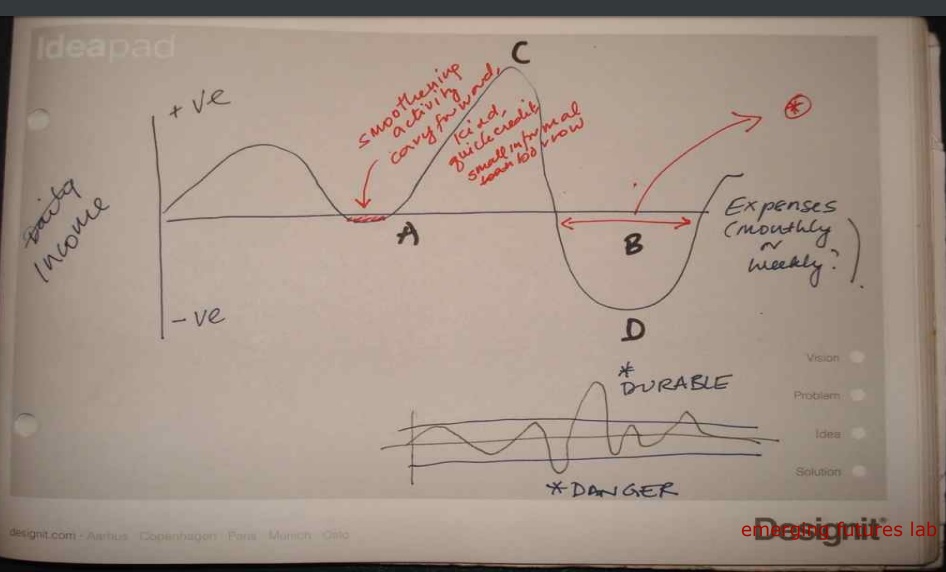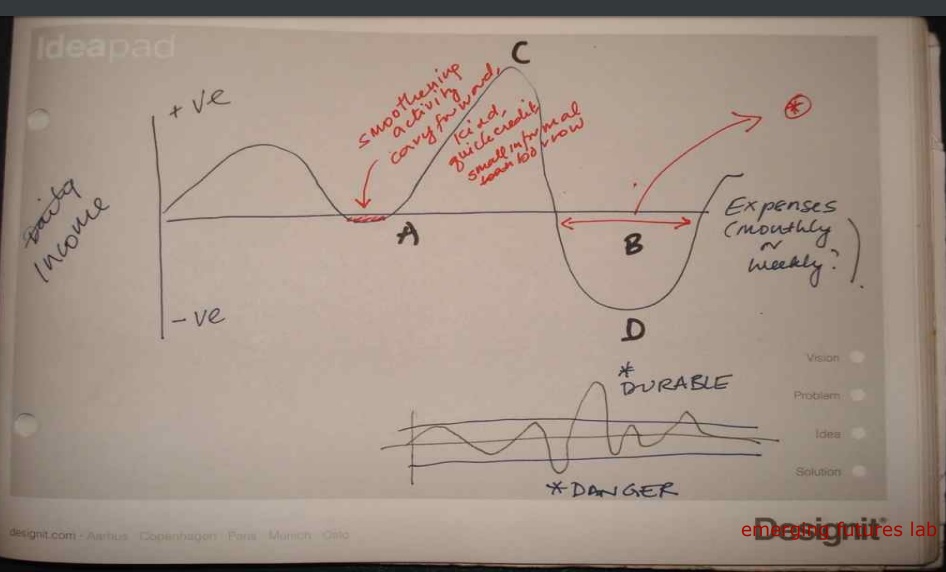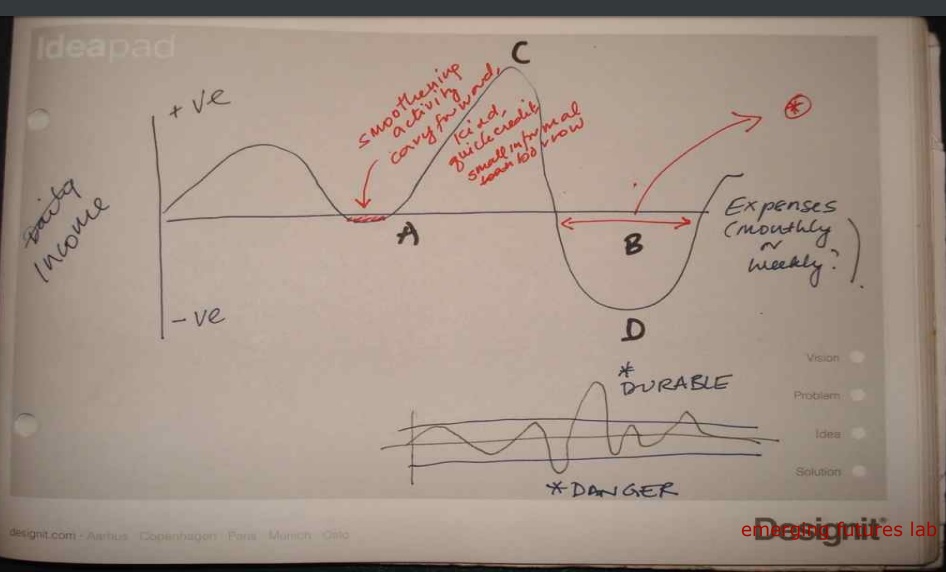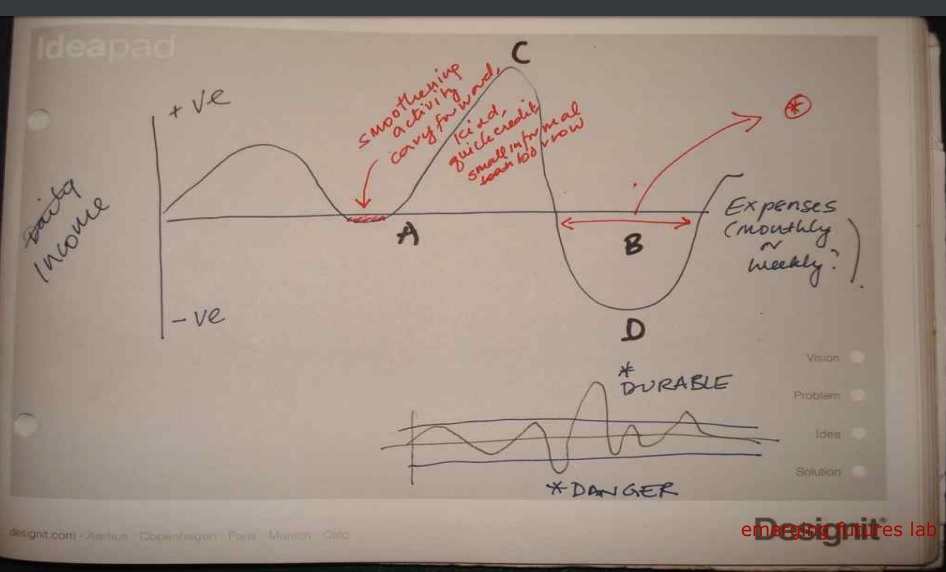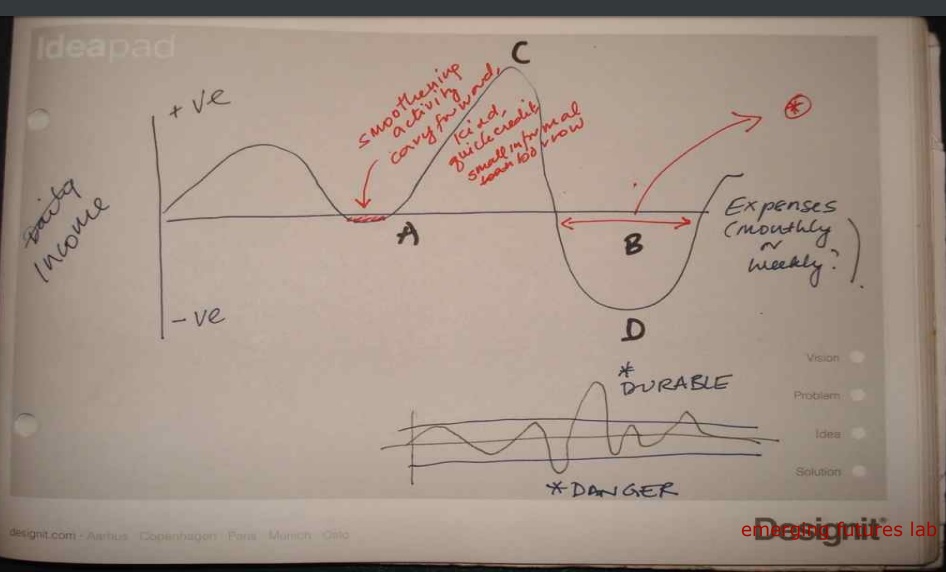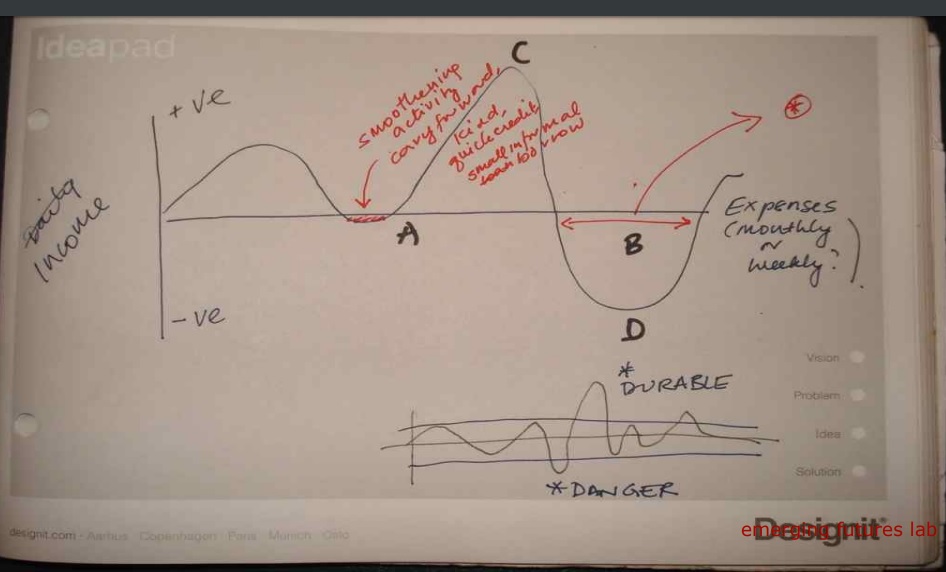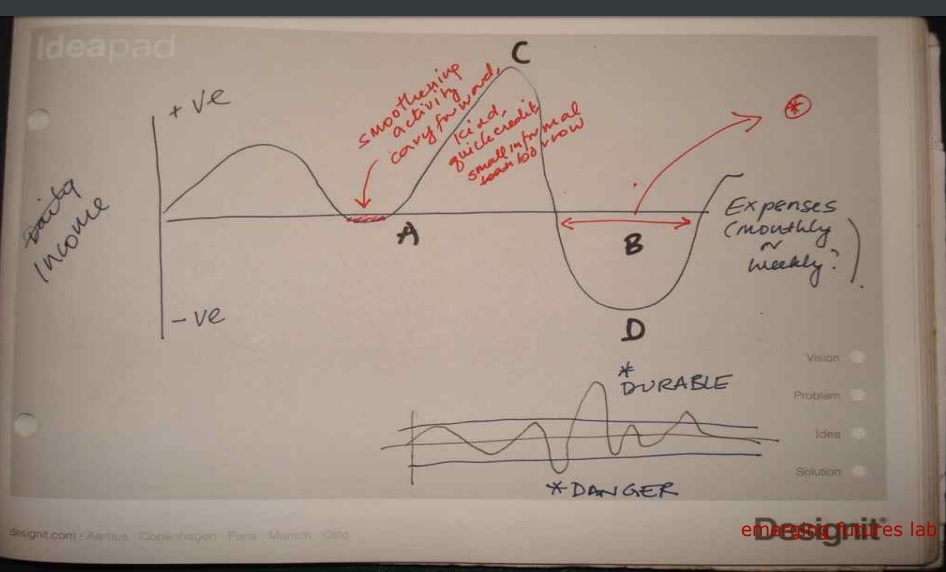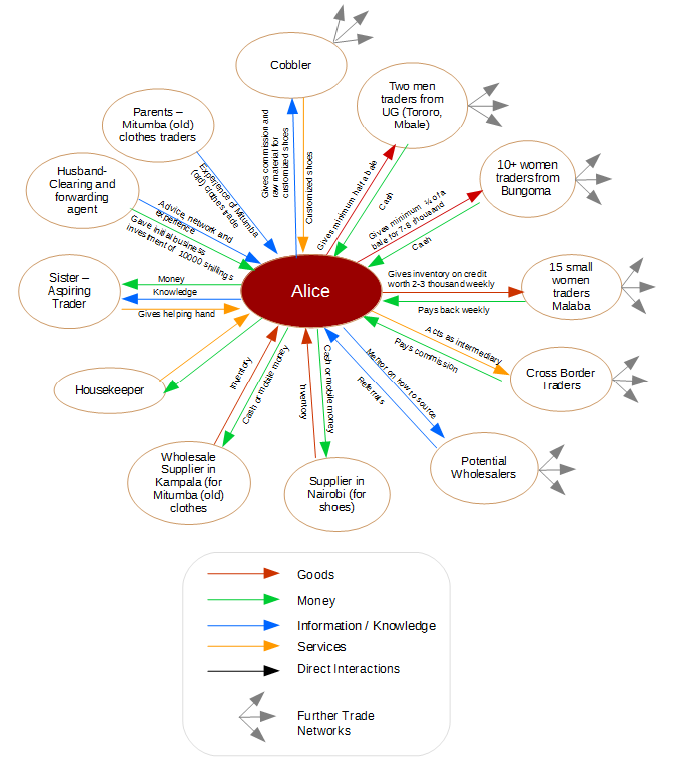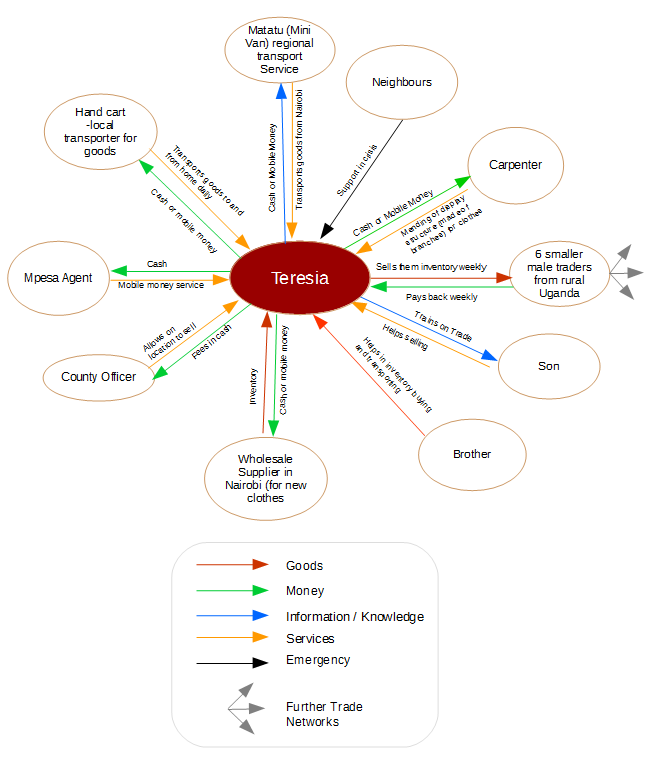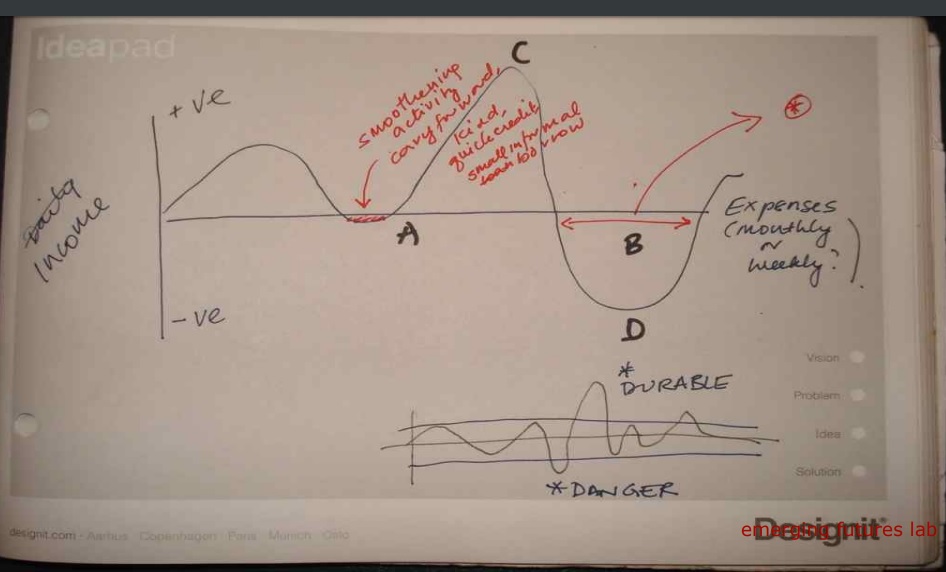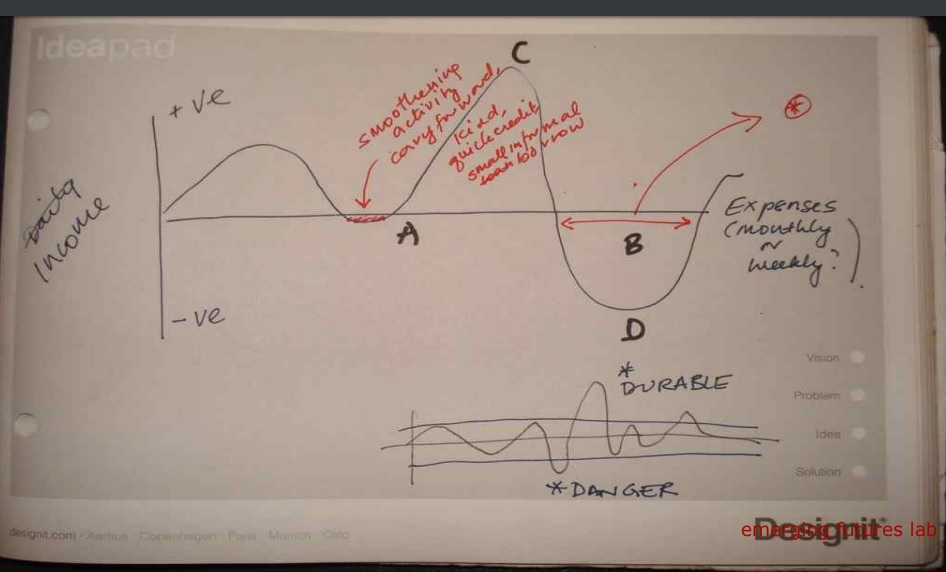Let me talk to you about the volatility seen in household financial management for informally employed as well as rural & urban informal sector - qualitatively. Income streams are irregular & cash flows unpredictable. The dip marked D is for Danger. I will unpack this in thread.
The horizontal line denotes your monthly expenses which are known eg rent, school fees, water purchase, food staples inc sugar oil tea etc
The vertical denotes your cash flow as +ve or -ve against your expenses (time period can be monthly or weekly, still sketching it out).
1/
The vertical denotes your cash flow as +ve or -ve against your expenses (time period can be monthly or weekly, still sketching it out).
1/
On the bottom right, I& #39;ve shown 2 additional lines which denote the "safety margin" of acceptable volatility i.e. the manageable band within which ppl try to keep the gap between incoming cash vs outgoing expenses (applies to both household & informal businesses)
2/
2/
All of this is a compressed snapshot of how things fluctuate, over time. For instance, over the course of the natural year, the peak c for a farmer is post harvest and a big slump D might be a damaged harvest by locust or known expenses eg inputs stretching finances - dip A
3/
3/
Contextualizing conditions for status A; status B, C, D, to current day, I will use the example of a woman vegetable vendor who has perishable fresh produce like tomatoes for sale in your residential neighbourhood. She does not live there but comes to same spot daily to sell.
4/
4/
5/ So her cash flow is daily, and so she must manage money on a frequency and periodicity of a 24 hour cycle. That is Time. Money can denote cash or kind, and refers to the amount or quantity. T & $ are going to be our faithful friends for this diagram.
6/ If she falls ill & cannot come to sell, & its a brief mild illness like common cold, her income vs expenses status will be A. She might ask her wholesaler for credit advance for purchasing tomatoes that dawn for the day& #39;s sales if her cash available was depleted during A days
7/ Nowadays with mobile micro loans, my hypothesis is that informal traders use it for A situations to cover the gap between incoming and outgoing if they were not well enough to go sit and sell tomatoes on the road.
8/ Status A is not "dangerous" dip - usually 2-4 days maximum. A roadside stone breaker interviewed in Malawi said he bashed his thumb badly & couldn& #39;t work for 4 days & turned to his coworkers for small cash loan to support family. Caveat here is wealth spread of your social net
9/ If your social network& #39;s wealth spread is greater, that will correlate to the duration of your A dip - a manageable period without income/cash flow - as it will influence your credit ranking and cash and kind advances from your supply & demand value web.
10/ Alice& #39;s network is visibly in a better situation, as is Alice, than Teresia. However, the caveat remains that Teresia might have a rich uncle in town we don& #39;t know about. We& #39;re broadly generalizing & compressing here to understand the dips and highs of irregular incomes
11/ The duration marked B is * because it is longer than the individual& #39;s network can afford to support the individual going without cash flow or income. If individual is breadwinner then family is in trouble as B continues - time without money.
12/ Right now, the entire informal sector can be said to be within A so B households are still holding on more or less. What happens when the community& #39;s entire informal economic trade/biashara ecosystem moves to B duration? That is the bigger D than just one household destitute
13/ To wrap up for now, C is the harvest boom when rural households purchase consumer durables like TV sets and radios and at the individual household level, D means breadwinner died or had such a long illness that days without income wiped out the entire finances of the family.
14/ I will come back to evaluate how we can estimate how long a lockdown can last & to what degree of rigour before B duration turns into an irreversible D slump destroying the entire informal ecosystem.
No. You DONT want to destroy it because there will be nothing left to eat
No. You DONT want to destroy it because there will be nothing left to eat

 Read on Twitter
Read on Twitter